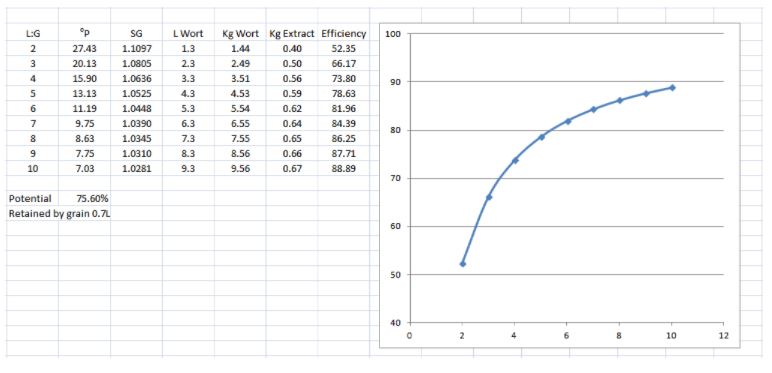RickyBeers
Well-Known Member
- Joined
- Jun 10, 2021
- Messages
- 136
- Reaction score
- 42
Planning to start my grainfather at 4am tomorrow for very basic American Light Lager.
Recipe:
Pilsner 6.5lb
Corn, flaked 1.35lb
Corn sugar (late addition) .5lb
Voss Kveik yeast, 1 pack dry
Mash step 1
147F 75min
Mashout
165F 10 min
Boil 90 min
60 min hallertau .5oz
10 min hallertau .5oz
Final batch size 5.5 USG
Mash water - 3.47 USG
Sparge water - 4.11 USG
Total water - 7.58 USG
I have brewed this beer before, and it was great. I used 5.2 stabilizer (which, I know, everyone hates that stuff)
My last 5 brews I have been off and on with astringency issues. Very depressing tossing a batch that's undrinkable. Before I started getting into water chemistry, I had never heard of astringency, and now of course as I stop the 5.2 and play with brewing salts, I begin to have issues. I also had a stuck sparge for the first time, which I believe also caused issues.
Tomorrow, I'm going to try the 5.2 stabilizer again, but I'm also spooked about that amount of sparge water, since sparging is also a astringency culprit.
I checked the recipe on both the grainfather app, and brewsmith, both had more sparge water than mash. Am I safe to follow it? Or should I just use my total water, add 5 gallons for mash, and sparge with the remaining 2.58?
Recipe:
Pilsner 6.5lb
Corn, flaked 1.35lb
Corn sugar (late addition) .5lb
Voss Kveik yeast, 1 pack dry
Mash step 1
147F 75min
Mashout
165F 10 min
Boil 90 min
60 min hallertau .5oz
10 min hallertau .5oz
Final batch size 5.5 USG
Mash water - 3.47 USG
Sparge water - 4.11 USG
Total water - 7.58 USG
I have brewed this beer before, and it was great. I used 5.2 stabilizer (which, I know, everyone hates that stuff)
My last 5 brews I have been off and on with astringency issues. Very depressing tossing a batch that's undrinkable. Before I started getting into water chemistry, I had never heard of astringency, and now of course as I stop the 5.2 and play with brewing salts, I begin to have issues. I also had a stuck sparge for the first time, which I believe also caused issues.
Tomorrow, I'm going to try the 5.2 stabilizer again, but I'm also spooked about that amount of sparge water, since sparging is also a astringency culprit.
I checked the recipe on both the grainfather app, and brewsmith, both had more sparge water than mash. Am I safe to follow it? Or should I just use my total water, add 5 gallons for mash, and sparge with the remaining 2.58?



































![Craft A Brew - Safale S-04 Dry Yeast - Fermentis - English Ale Dry Yeast - For English and American Ales and Hard Apple Ciders - Ingredients for Home Brewing - Beer Making Supplies - [1 Pack]](https://m.media-amazon.com/images/I/41fVGNh6JfL._SL500_.jpg)












